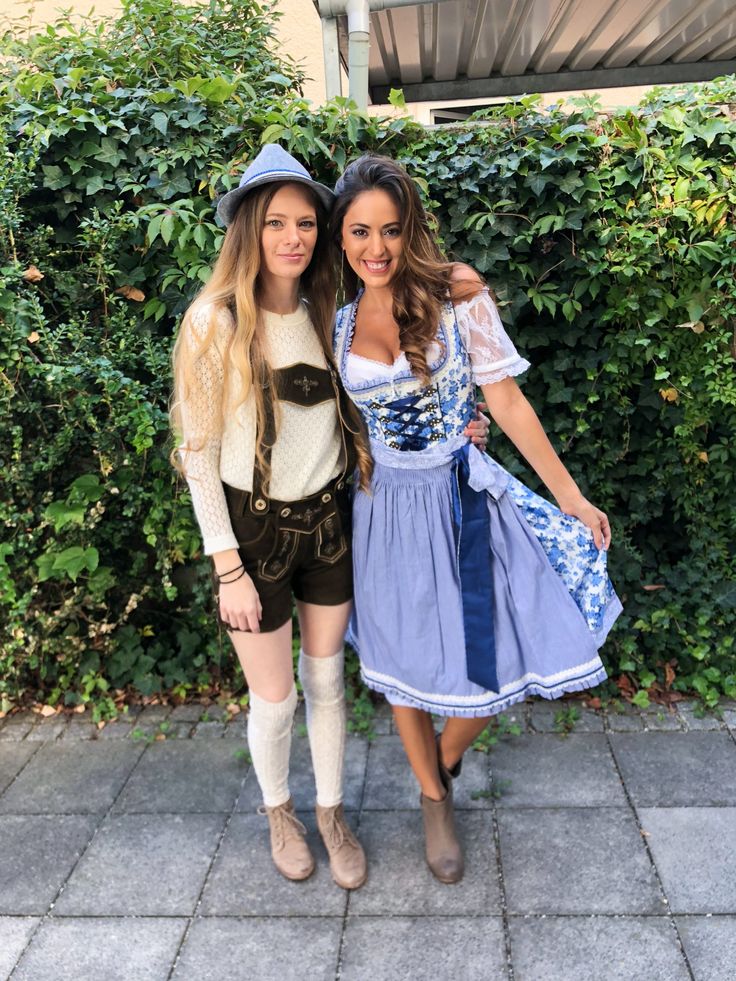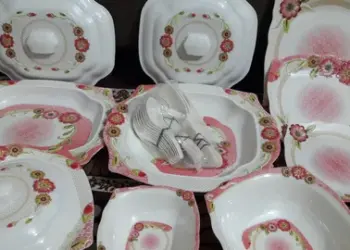Dirndl Oktoberfest, with its distinctive elegance and charm, has long been synonymous with the lively celebrations of Oktoberfest. The roots of dirndls trace back to the early 19th century when they emerged as the attire of choice for women in the Alpine region, particularly Bavaria.
Oktoberfest, the renowned German beer festival, is a vibrant backdrop for these ensembles, highlighting their significance in cultural gatherings. Purchase your favorite Bavarian attire at Oktoberfest Wear!
| Fun Fact: The traditional dirndl color is blue, but it can also be found in other colors too. |
Components of a Traditional Dirndl
There are three main components of Dirndl
1. Bodice: A Fusion of Craftsmanship and Style
The bodice is at the heart of every Women’s dirndl for Oktoberfest, a fitted garment that accentuates the wearer’s figure. These bodices showcase intricate patterns and designs, often featuring floral motifs and delicate embroidery. The artistry poured into crafting these bodices is a testament to the region’s expertise in textile and fashion. The bodice provides structure to the dirndl and embodies the essence of Bavarian craftsmanship.
2. Blouse: Complementing Elegance
The blouse worn beneath the bodice plays a pivotal role in dirndl ensembles. Traditionally, white blouses are paired with dirndls, adding a touch of purity to the overall look. However, modern interpretations have expanded the blouse spectrum, introducing different necklines and sleeve lengths. This diversity ensures that Authentic Oktoberfest dirndl wearers can customize their outfits to match their personal preferences while respecting tradition.
3. Apron: The Symbolic Accessory
An indispensable element of the dirndl ensemble is the apron. Beyond its functional purpose of protecting the dress, the apron carries symbolism. Tie the apron on the left side if you are single, while on the right if married. The apron also functions as a blank canvas for creativity, with room for designs, colors, and even needlework.
Variations in Dirndl Skirts
Full Skirts: Timeless Elegance
The traditional long and full skirt is emblematic of dirndls’ timeless appeal. These skirts exude grace and femininity, swaying gently with every step. The voluminous silhouette evokes images of rustic beauty and classic charm, making them a favorite choice for those who wish to embody the essence of Bavarian tradition.
A-line Skirts: Modern Sophistication
In recent years, A-line skirts have been seamlessly integrated into the world of dirndls. This contemporary twist offers a flattering silhouette for various body types. A-line dirndls provide a balance between tradition and modernity, allowing wearers to showcase their personal style while paying homage to the roots of the dress.
Mini Dirndls: Playful and Youthful
For those seeking a youthful and spirited look, mini dirndls present an ideal option. With shorter skirt lengths, these traditional dirndl dress for Oktoberfest capture the essence of fun and playfulness. Mini dirndls are especially popular among the younger generation, offering them a way to engage with tradition while embracing a modern aesthetic.
Color Palette and Fabric Choices
Traditional Color Schemes: A Nod to Heritage
The color palette of dirndls holds a mirror to Bavaria’s natural beauty. Traditional combinations include earthy tones such as forest green, deep red, and muted browns. These hues reflect the region’s landscape and connect dirndl wearers to their surroundings, creating a sense of cultural belonging.
Contemporary Colors: Embracing Change
While traditional colors remain beloved, contemporary dirndl fashion has embraced a broader spectrum. Vibrant shades like royal blue, rich purple, and even pastels have found their way into modern dirndl Oktoberfest designs. This infusion of color adds a fresh dimension to the dress, allowing wearers to experiment with their style.
Fabric Selection: A Journey of Textures
Dirndls are crafted from a variety of fabrics, each contributing to the dress’s texture and character. Traditional dirndls often feature fabrics like cotton and wool, known for their comfort and durability. However, modern interpretations incorporate silk, satin, and even blends that elevate the dress’s elegance while maintaining its cultural significance.
Intricate Embroidery and Embellishments
Traditional Embroidery: Stitching Stories
The art of embroidery is deeply ingrained in the history of dirndls. Traditional patterns, often floral or geometric in nature, are meticulously embroidered onto bodices, blouses, and aprons. This craftsmanship not only enhances the aesthetic appeal of the dress but also carries forward tales of the past.
Beads and Sequins: A Touch of Glamour
Contemporary dirndl Oktoberfest fashion has seen the incorporation of beads and sequins, infusing a touch of glamour into the traditional attire. These embellishments catch the light, adding a dynamic element to the dress. The harmonious fusion of tradition and modernity is evident in the way these embellishments seamlessly complement the dress’s foundation.
Lace Accents: Delicate Elegance
Lace, with its delicate and intricate nature, finds its way onto dirndls as well. Lace accents, whether on sleeves, bodices, or hems, bring an air of sophistication to the dress. This subtle addition enhances the dress’s femininity and creates an interplay between textures, ultimately contributing to the overall visual appeal.
Dirndls for Various Body Types
Petite Figures: Stylish Solutions
For those with a petite frame, styling a dirndl involves thoughtful choices. Opting for a shorter skirt length can create the illusion of height, while fitted bodices accentuate curves. Monochromatic color schemes also contribute to elongating the silhouette, making petite wearers feel confident and elegant.
Curvier Silhouettes: Embracing Elegance
Dirndls are designed to celebrate the beauty of diverse body types. Curvier individuals can enhance their figures by selecting A-line skirts that flow gracefully over curves. Darker color choices and strategic placement of patterns offer a flattering appearance, allowing curvier wearers to embrace the elegance of dirndl Oktoberfest fashion.
Tall and Slender: Embodying Grace
Tall individuals have the advantage of being able to carry off various dirndl styles with grace. Long skirts and fitted bodices emphasize their stature, while experimenting with vibrant colors and intricate patterns adds depth to the ensemble. Tall wearers can confidently explore different design elements, knowing they can pull off a wide range of looks.
Modern Interpretations and Contemporary Designs
Designer Dirndls: A Touch of Luxury
The world of high fashion has also embraced the allure of dirndls. Designer interpretations combine traditional elements with haute couture, resulting in exquisite ensembles that redefine the dress’s boundaries. These designer dirndls are not only a celebration of tradition but also a canvas for innovation and creativity.
Fusion with Other Styles: Embracing Trends
Dirndl Oktoberfest has transcended its traditional context, merging with contemporary fashion trends. From incorporating modern fabrics to experimenting with unconventional patterns,
These interpretations showcase the dress’s adaptability. This fusion creates an exciting bridge between the past and the present, appealing to a wide range of fashion enthusiasts.
Minimalist Dirndls: Understated Elegance
In contrast to elaborate designs, minimalist Oktoberfest dirndl with apron offer a sophisticated and understated approach. These dresses celebrate simplicity, focusing on clean lines and subtle details. This aesthetic resonates with those who appreciate elegance in its most refined form, allowing the dress’s essence to shine without distraction.
| Fun Fact: The dirndl is not just a traditional garment, it is also a popular fashion item. |
Concluding Remarks!
Dirndl Oktoberfest remains an enduring symbol of tradition, elegance, and cultural heritage in a world characterized by ever-changing fashion trends. Their evolution from humble beginnings to global recognition is a testament to their timeless appeal.
From the intricate bodice to the playful mini dirndl, every aspect of these dresses reflects the artistry and spirit of Bavaria. As we celebrate dirndls, we acknowledge their role in preserving history while celebrating the beauty of diversity and self-expression. Buy dirndl for Oktoberfest at Oktoberfest Wear to embrace the traditional Bavarian attire.














